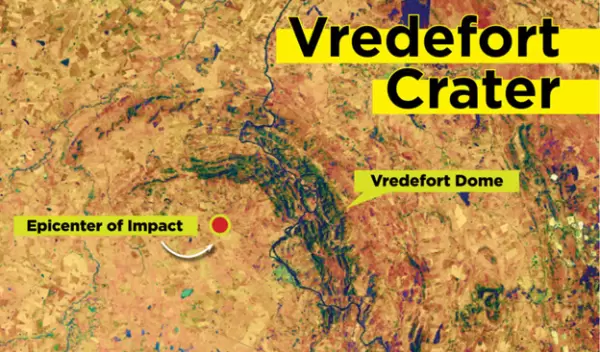
Asteroid that formed ancient crater larger than previously believed
About 2 billion years ago, an impactor hurtled toward Earth, crashing into the planet in an area near present-day Johannesburg, South Africa.
The impactor — most likely an asteroid — formed what is today the biggest crater on the planet. Scientists have widely accepted, based on previous research, that the impact structure, known as the Vredefort crater, was formed by an object about 15 kilometers (approximately 9.3 miles) in diameter that was travelling at a velocity of 15 kilometers per second.
But according to U.S. National Science Foundation-supported researchers at the University of Rochester, the impactor may have been much bigger — and would have had devastating consequences across the planet. The study, published in the Journal of Geophysical Research, provides a more accurate understanding of the large impact and will allow scientists to better simulate impact events on Earth and other planets, both in the past and the future.
Over the course of 2 billion years, the Vredefort crater has eroded. That makes it difficult for scientists to directly estimate the size of the crater at the time of the original impact, and therefore, the size and velocity of the impactor that formed the crater.
An object that is 15 kilometers in size and traveling at a velocity of 15 kilometers per second would produce a crater about 172 kilometers in diameter. However, this is much smaller than current estimates for the Vredefort crater.
The current estimates are based on new geological evidence and measurements estimating that the structure's original diameter would have been between 250 and 280 kilometers (approximately 155 and 174 miles) during the time of the impact.
The scientists conducted simulations to match the updated size of the crater. Their results showed that an impactor would have to be much larger — about 20 to 25 kilometers — and traveling at a velocity of 15 to 20 kilometers per second to explain a crater 250 kilometers in size.
"This team has used a modern approach to obtain new insights into the environment of the early Earth," says Justin Lawrence, a program director in NSF's Division of Earth Sciences. "The findings may lead to better prediction of the potential effects of impactors in the future and the consequences for global climate."


